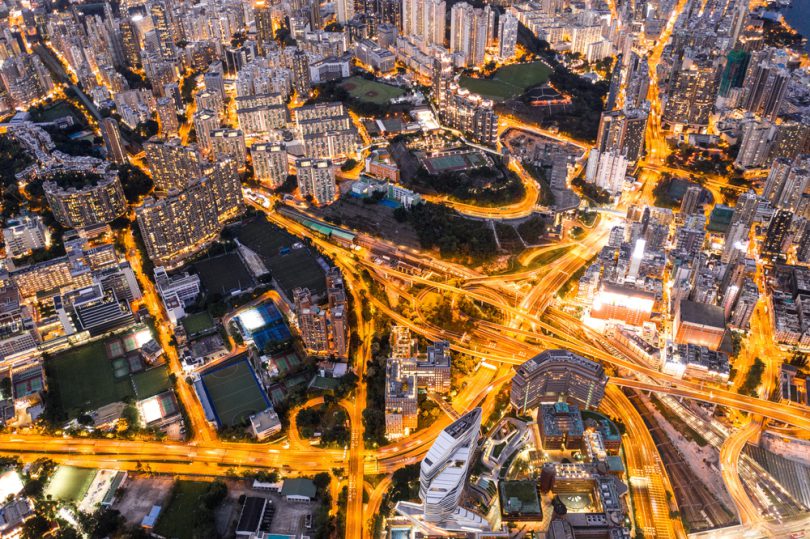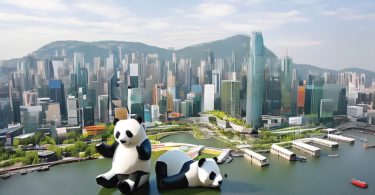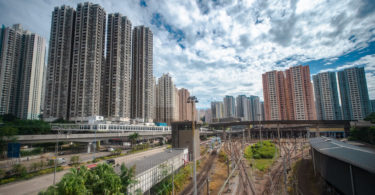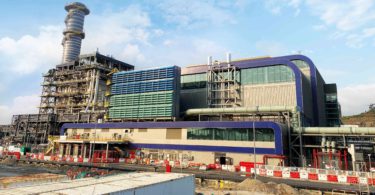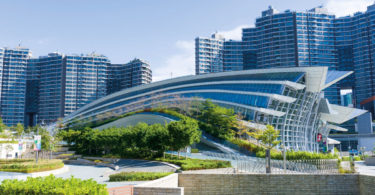by Prashant Kapoor
Carbon-Intensive Urban Sprawl
The built infrastructure of our cities, the types of buildings, the parking and public transport network, as well as water and electricity networks determine the cities’ energy use and carbon emissions. Research suggests that roughly 30 per cent of future ‘committed’ greenhouse-gas (GHG) emissions will occur due to new urban building and transport systems[i]. Therefore, energy-inefficient urban developments can lock us in on a high emissions trajectory.
Controlling GHG emissions from standalone buildings can be achieved relatively easily through better insulation, daylighting, mixed-mode ventilation, more efficient heating and cooling systems, and the installation of small-scale renewable energy sources, particularly on rooftops. However, broader strategies, such as achieving optimum urban density, overall building configuration or massing, and urban planning layouts to reduce wastage while ensuring comfort and affordability, require much more careful analysis and consideration.
Car-dependent urban growth at the fringes of the city, known as urban sprawl, is increasing urban emissions and private transportation energy use[ii]. In addition, sprawling, relatively low-density urban settlements make public transportation investments untenable as there are fewer people to the bus or metro service at each transit node. Research has also shown that low urban density can negatively impact urban energy use and the quality of life of urban residents[iii]. On the other hand, dense, mixed-use developments close to public transit nodes give people convenient and cleaner transport options. Many cities have mass transit options in place or in the planning stage but are yet to adjust urban planning to maximise the benefits fully.
Incorporating transit into urban design allows developers to benefit from stable or higher property values. Mixed-use settings also create commercial opportunities that benefit from increased foot traffic in the area.
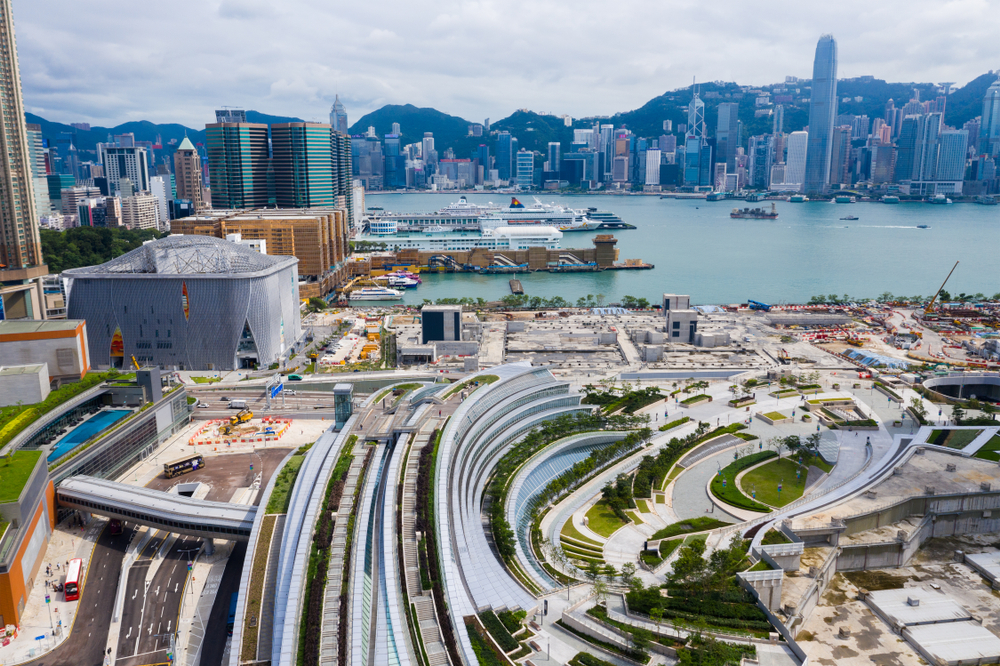
West Kowloon Station terminus as the largest cross-border transit network in Hong Kong exemplifies how architecture and infrastructure interweave in this vibrant and dense city; Image by Lewis Tse Pui Lung/Shutterstock
Towards A Greener & More Liveable Urban Built-Environment
Low-carbon Green Urban Developments (GUD) can range from smaller projects built around or along transit stations, i.e., transit-oriented developments (TOD), to mixed-use ‘in-fill’ development and ‘Green townships’ where the master plan incorporates transit development.
The typical features of these GUDs are:
- Mixed-use development that includes shops, schools, other public services and a variety of housing types and prices.
- High density and compact development that maximises land use and improves affordability.
- More energy, water and waste-efficient design of buildings and infrastructure.
- Public transit stations or transit corridors that are easy to access, reliable and secure, with street and road planning for non-motorised transport.
- Pedestrian and bicycle-friendly street and road planning. Streets should have good traffic calming features to control vehicle traffic speeds.
- Restriction on car parking to discourage vehicle ownership.
- Public and private sector participation.
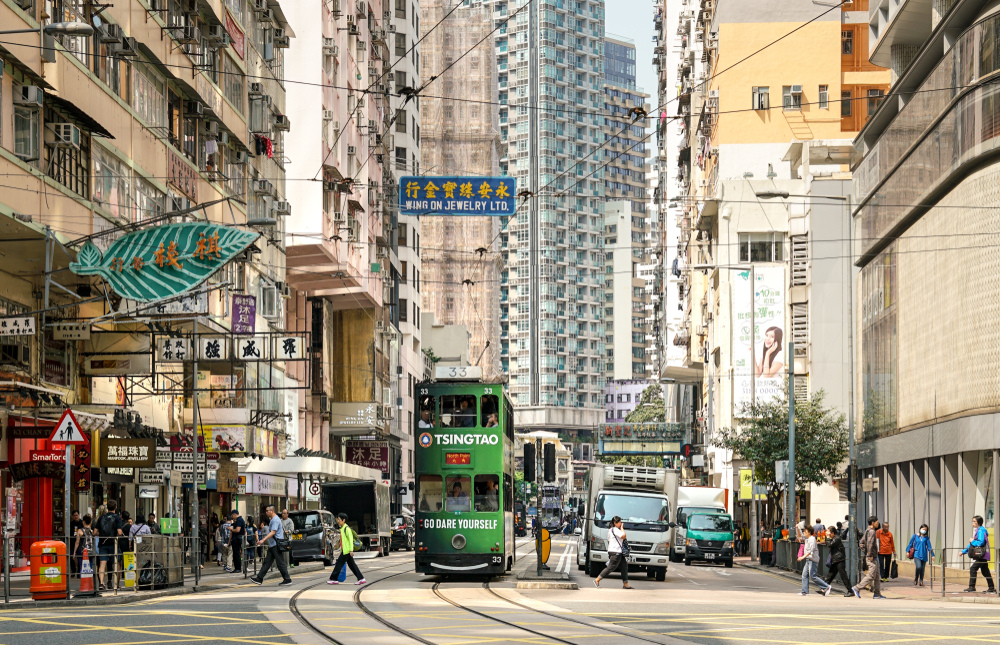
Hong Kong street corridors; Image by Sinseeho/Shutterstock
Green Urban Developments Create Value for All
Developing a reliable transportation system requires considerable capital expenditure, but a substantial pool of users will offset the costs over time. In addition, decreased pollution and fuel consumption will provide economic benefits to users, governments, and companies while enhancing a city’s ability to maintain its competitiveness and environmental sustainability.
Green urban developments can provide substantial cost savings for city governments and citizens. A recent study concludes that China could save USD1.4 trillion in urban infrastructure costs[iv] if urban development plans optimised density over sprawl.
Incorporating transit into urban design allows developers to benefit from stable or higher property values. Mixed-use settings also create commercial opportunities that benefit from increased foot traffic in the area. A developer may also be able to access government incentives for such projects. Hong Kong, for example, has created a financially successful rail and property funding model, allowing the Mass Transit Railway Corporation to partner with individual private developers to build along new and existing rail lines.
Reducing residents’ dependence on private vehicles will help decrease their overall living expenses while improving health outcomes by increasing physical activity. Living in such developments can increase residents’ sense of community and wellbeing, and help improve living standards.
Making It Happen
Both market and policy tools can drive value creation in Green urban developments by:
- Creating a Green urban development (or TOD) policy framework and integrated infrastructure planning that prioritises high-density mixed land use.
- Reforming land-use regulations such as single-use zoning, low-density limits, and high parking fees to encourage mixed-use TODs with reduced car parking. These should combine with effective policy changes such as mandating maximum car parking for homes rather than a minimum.
- Redefining policy of affordable housing to include the combined cost of housing and transport.
- Creating incentives for the private sector. Cross-subsidisation using tax abatement or value capture methods could make transit-accessible locations more accessible for private developers and investors.
- Exploring alternative implementation options, including Public-Private Partnerships (PPPs), to leverage private sector skills and financing to develop projects.
- Encouraging corporations to locate offices within Green urban developments as anchor tenants through financial and non-financial policy incentives.
IFC is piloting a new tool to quantify the impact of GUDs. This tool is an addition to the array of EDGE tools for Green building projects that aims to help developers influence clients to choose GUD designs early in the project planning process.
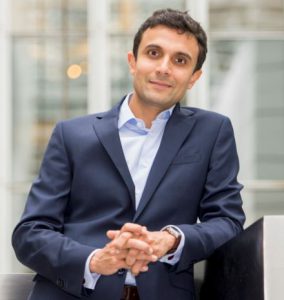
PRASHANT KAPOOR
Chief Industry Specialist, World Bank Group (IFC)
As an industry specialist based in Singapore, Prashant Kapoor guides the IFC’s global investments in the built environment with a particular focus on financing low carbon developments and sustainable cities. Under his leadership, IFC has created a Green building portfolio of more than USD6 billion, both directly and through financial intermediaries. In 2014, Kapoor invented IFC’s EDGE (Excellence in Design for Greater Efficiencies), a software application and certification system to mainstream resource-efficient buildings in more than 150 countries. Prior to joining IFC, Prashant was a director at WSP consultants in London where he led the sustainability strategy and master planning business.
Kapoor holds architecture degrees from Manipal Institute of Technology (India) and a master’s degree in energy-efficient building from Oxford Brooks University (UK). He currently manages APEX Green Cities Program, World Bank Group’s Green cities initiative, that supports cities to transition to low-carbon and resource-efficient growth pathways.
References:
[i] Erickson, Peter & Tempest, Kevin. (2015). Keeping Cities Green: Avoiding Carbon Lock-in Due to Urban Development.
[ii] 2) Bart, István. “Urban sprawl and climate change: A statistical exploration of cause and effect, with policy options for the EU.” Land Use Policy 27 (2010): 283-292.
[iii] Güneralp, B., Zhou, Y., Ürge-Vorsatz, D., Gupta, M., Yu, S., Patel, P. L., Fragkias, M., Li, X., & Seto, K. C. (2017). lobal scenarios of urban density and its impacts on building energy use through 2050. Proceedings of the National Academy of Sciences of the United States of America, 114(34), 8945–8950.
[iv] The World Bank. (2014). Reforms in Land Use and Local Finances Will Help Make China’s Urbanization More Efficient.

 Malaysia
Malaysia Singapore
Singapore Indonesia
Indonesia Tiếng Việt
Tiếng Việt ประเทศไทย
ประเทศไทย


